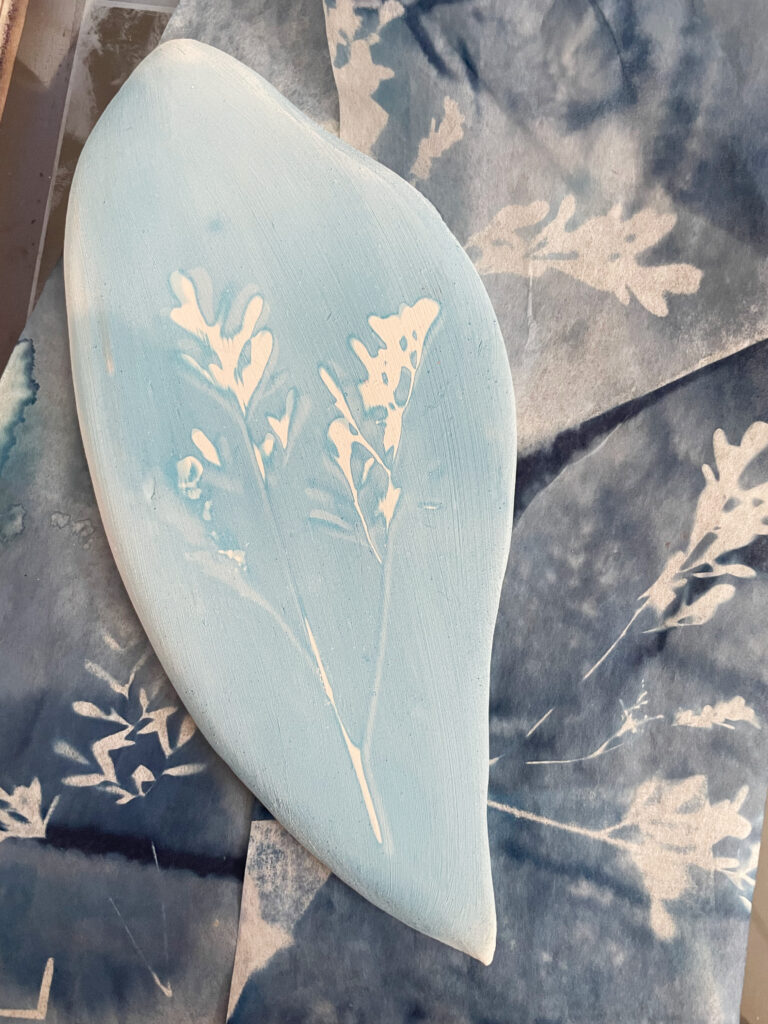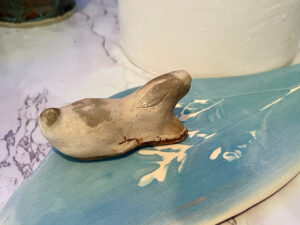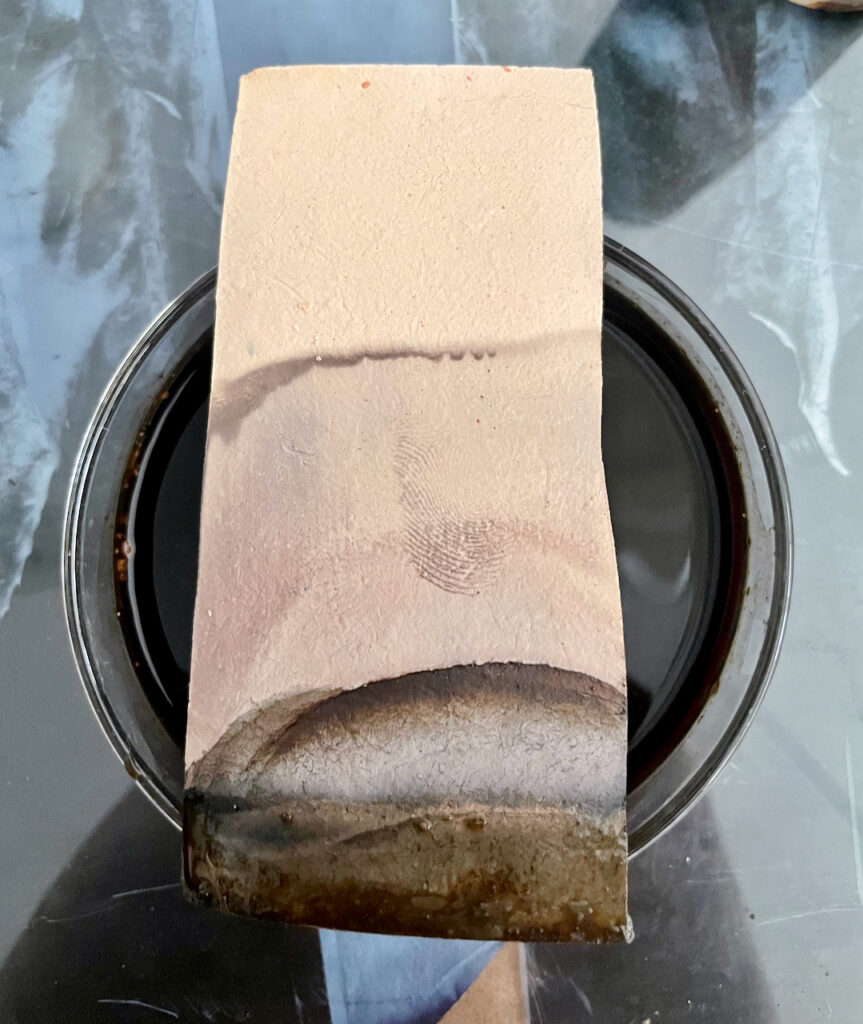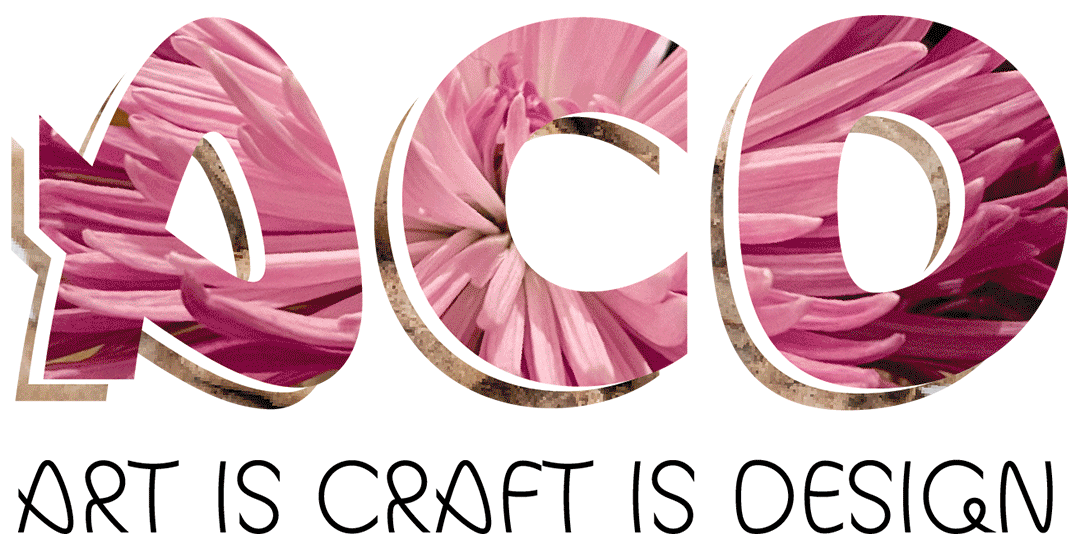I’ve been taking a ceramics class at my local park district, and after months of waiting, I finally got my bisque fired pieces back yesterday. So I made one of them into a cyanotype and another into a chromatogram.
Cyanotype Ceramics
When making cyanotypes on filter paper, I heavily dilute the chemicals. That’s because the filter paper becomes fully saturated with the cyanotype chemicals, rather than the chemicals just soaking into or resting on the top layer. I used that same concentration of diluted chemicals to make this test piece.

See how the filter paper produced blues ranging from navy to faded denim, while the ceramic piece came out a light, sky blue. I made these images using rue I picked from my community garden plot.
Cyanotypes and Tea
In Chinese tea culture, gongfu cha brewing is a method for brewing tea that is more meditative and helps the drinker focus on the nuances in the leaves. Part of this method often includes washing your leaves by briefly pouring hot water on them and then disposing of that water. This excess water often gets poured on tea pets, little ceramic figurines that develop a patina the more tea is poured on them.
In photography, tea is often used to tone cyanotypes. The prints are usually bleached first, and then soaked in tea. For my experiment, I’m skipping the bleaching and pouring my tea wash water directly on the ceramic. So far, there hasn’t been a color change, but the tea I used ended up only having a moderate level of tannins, the main chemical in tea that is responsible for toning cyanotypes.
Will the ceramic develop a patina over time in the way that tea pets do? How much will the blue change given the lack of bleaching?

Here is a photo of a little rabbit tea pet I made using the same grey clay. After a few months of pouring white tea on it, it has started to turn black. Will my cyanotype ceramic (which has essentially become a tea pet) turn black? Note that in this image, the blue of the cyanotype is a little darker because it’s still wet from the tea I poured on it.
Chromatogram Ceramics
Good paper for chromatography absorbs liquids well. Different clays have a range of porosity, and I’m not sure what the porosity of this particular grey clay is. It absorbs cyanotype chemicals and silver nitrate solutions fairly easily but took much longer to absorb the chromatography sample, which was soil from my community garden plot.

The true results of this test won’t be seen for another month though as the print develops in sunlight. Often, the clear portion of a sample will spread the farthest on filter paper, and the compounds it contains won’t be visible until the paper is exposed to UV light.
What’s next?
I want to do more cyanotype tests, including making bisqueware that’s had plants pressed into it. But I don’t know when I’ll be able to get those made. I need to find a ceramic studio that will fire my pieces more quickly. Any recommendations?
I do have a couple more pieces of bisqueware that I can play with in the meantime though, so I’ll be testing stronger concentrations of chemicals on them to see what range of blues I can produce.

Leave a Reply